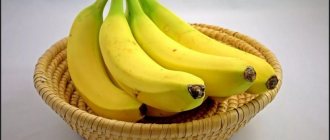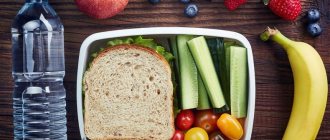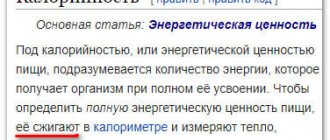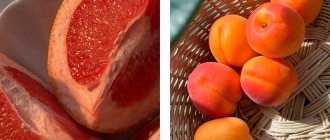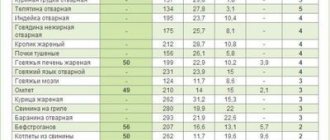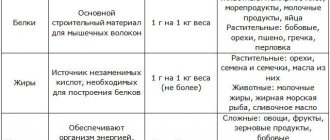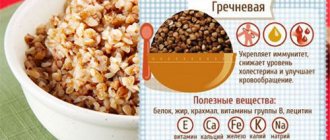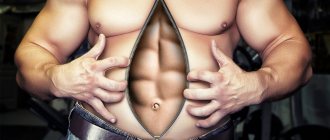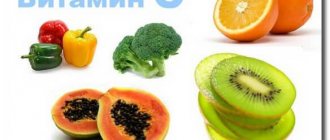Blog
B vitamins are a group of vitamins, each of which is important for metabolism and overall health. They are especially important for the metabolism of fats, carbohydrates, sugars and proteins, and help the body convert these nutrients into energy. B vitamins are water-soluble, meaning any unused or excess residue in the blood will be excreted in the urine. Most B vitamins are not stored by the body. Exceptions are vitamin B12 and vitamin B9 (folic acid).
An easy way to supplement your diet with B vitamins is with our all-natural AdalbaPro vitamin and protein supplements.
List of B vitamins:
- Vitamin B1 (thiamine)
- Vitamin B2 (riboflarin)
- Vitamin B3 (PP, Niacin, Niacin)
- Vitamin B5 (pantothenic acid)
- Vitamin B6 (pyrodoxine, pyrodaxal, pyrodoxamine)
- Vitamin B7 (H, biotin, coenzyme R)
- Vitamin B9 (Bc, M, folic acid)
- Vitamin B12 (cyanocobalamin)
Vitamin B1 (thiamine)
Promotes the conversion of carbohydrates, fats and proteins into energy.
- look like small transparent crystals.
- does not dissolve in alcohol,
- cannot be stored in reserve in human organs and tissues and
- does not cause a toxic effect.
- Our body can produce vitamin B1 on its own thanks to special bacteria in the colon.
What are the benefits of vitamin B1?
- regulates the normal functioning of the nervous system
- needed for the formation of acetylcholine
- participates in the exchange of water and salt, proteins, fats
- participates in the process of carbohydrate metabolism, the interaction of pyruvic and lactic acids
- is formed in the body as a phosphorylated form of vitamin B1
- responsible for hematopoiesis, improves blood transport to organs
- has a positive effect on the functioning of the brain and its abilities: increases the ability to learn, affects the cognitive functions of the brain
- has a positive effect on growth and energy levels.
- increases appetite
- good for the heart muscles and gastrointestinal tract.
- powerful antioxidant, prevents premature aging
- eliminates partially the toxic effects of alcoholic beverages and tobacco on the body
- products consumed in one meal along with thiamine are much better absorbed
Vitamin B1 intake rate
Average daily intake of vitamin B1:
- from 0 to 1 year - 0.4 mg
- from 1 to 3 years - 0.8 mg.
- from 4 to 6 years - 0.9 mg,
- from 7 to 10 years - 1.2 mg
- For men over 11 years of age, 1.2 to 1.5 mg is recommended. 1.5 mg should be taken in old age or if you have bad habits
- Women over 11 years of age are recommended from 1 to 1.3 mg of thiamine per day. Pregnant women – 1.5 mg. Breastfeeding - 1.6 mg per day.
A few rules:
- The older a person gets, the more thiamine he needs, since with age it begins to be absorbed worse and worse.
- If a child eats incorrectly and is not balanced, then the dose of thiamine should be increased. Especially if the child eats a lot of foods containing flour.
What foods contain vitamin B1?
Thiamine is found in both plant and animal products, but after heat treatment, thiamine breaks down and is found in food in minute quantities. The leader in the amount of vitamin B1 are sunflower seeds. But it won’t be in regular store-bought oil, because during production at factories the oil goes through many treatments, including heat. Only natural, cold-pressed sunflower oil will be beneficial.
Foods rich in vitamin B 1
| The product's name | Vitamin B1 content per 100g, mg |
| Sunflower seeds sunflower seeds | 1,84 |
| Sesame | 1,27 |
| Oat bran | 1,17 |
| Soybean grain | 0,94 |
| Peas | 0,9 |
| Pistachios | 0,87 |
| Sunflower halva | 0,8 |
| Wheat bran | 0,75 |
| Peanut | 0,74 |
| Pollock caviar | 0,67 |
| Red granular caviar | 0,55 |
| Meat pork meat | 0,52 |
| Cashew | 0,5 |
| Bean grain | 0,5 |
| Lentil grain | 0,5 |
| Oatmeal | 0,49 |
| Oats grain | 0,47 |
| Hazelnut | 0,46 |
| Oat flakes "Hercules" | 0,45 |
| Wheat grain, soft variety | 0,44 |
| Rye grain | 0,44 |
| Buckwheat groats | 0,43 |
| Buckwheat | 0,42 |
| Millet groats, polished | 0,42 |
| Rye wallpaper flour | 0,42 |
| Wheat flour | 0,41 |
| Pine nut | 0,4 |
| Buckwheat flour | 0,4 |
| Fat pork meat | 0,4 |
| Walnut | 0,39 |
| Beef kidneys | 0,39 |
| Durian | 0,37 |
| Wheat flour 2 grades | 0,37 |
| Wheat grain, durum | 0,37 |
| Corn flour | 0,35 |
| Oat flour | 0,35 |
| Peeled rye flour | 0,35 |
| Insect Protein IPC | 0,34 |
| Fresh green peas | 0,34 |
| Rice grain | 0,34 |
| Chum salmon | 0,33 |
| Barley grain | 0,33 |
| Buckwheat grain | 0,3 |
| Wheat groats | 0,3 |
| Low-fat dry milk | 0,3 |
| Beef liver | 0,3 |
| Tuna | 0,28 |
| Barley groats | 0,27 |
| Powdered milk 25% | 0,27 |
| Insect meal WBP | 0,26 |
| Pasta made from 1st grade flour | 0,25 |
| Almond | 0,25 |
| Wheat flour 1st grade | 0,25 |
| Dry cream 42% | 0,25 |
| Egg powder | 0,25 |
| Dried white mushrooms | 0,24 |
| Chicken egg yolk | 0,24 |
| Powdered milk 15% | 0,24 |
| Atlantic salmon | 0,23 |
| Navaga | 0,23 |
| Oatmeal flour | 0,22 |
| Pink salmon | 0,2 |
| Sweet corn | 0,2 |
| Dandelion leaves greens | 0,19 |
| Som | 0,19 |
| Sorrel greens | 0,19 |
| Squid | 0,18 |
| Premium flour pasta | 0,17 |
| Premium wheat flour | 0,17 |
| Seeded rye flour | 0,17 |
| Horse mackerel | 0,17 |
| Insect fiber FP | 0,16 |
| Dried acorns | 0,15 |
| Raisin | 0,15 |
| Crayfish | 0,15 |
| Chees Feta" | 0,15 |
| Oyster | 0,15 |
The need to consume meat and fish
Meat and fish are food products containing vitamins, micro- and macroelements, complete proteins and other useful substances. They are a source of fatty acids and minerals that the body needs so much.
The meat contains the following elements:
- Fats (animal origin).
- Proteins (actin, myosin, globulin, myoglobin, collagen, elastin).
- Minerals (Na, K, Cl, Zn, Mg, Fe, P, Ca).
- Vitamins (A, B, D, E, H, PP - in small quantities).
- Enzymes, extractives.
Minerals contained in meat help improve immunity, stimulate blood circulation, and play an important role in metabolic processes. Proteins are essential for bone formation and normal muscle function.
B vitamins in meat products normalize the functioning of nerve tissue connections and stabilize the heart, participate in energy exchange and improve the body's resistance.
The benefits of fish are determined by the amount of minerals, trace elements and other elements necessary for health that are part of it. It contains vitamins A, D and E, iron, calcium, iodine, phosphorus, zinc and magnesium .
Regular consumption of fish reduces the likelihood of bronchitis, arthritis, cardiovascular diseases and cancer, diabetes and psoriasis.
You may be interested in: Foods that cleanse the liver and pancreas
Vitamin B2 (riboflarin)
Participates in all types of metabolic processes.
- represents needle-shaped crystals of yellow-orange color, collected in druses, bitter taste
- highly soluble in water, stable in acidic solutions
- easily destroyed in neutral and alkaline solutions, sensitive to visible and UV radiation
- plays an important role in ensuring visual functions, important for mucous membranes
- affects the formation of collagen, necessary for the normal condition of skin, nails, hair, for which it is called the beauty vitamin
, a lack of vitamin B2 affects the appearance. - affects hemoglobin synthesis
- necessary for the formation of red blood cells, antibodies
- necessary for the normal functioning of the thyroid gland.
- Helps the body absorb other B vitamins and is necessary for the body to get enough energy from food.
- When there is an excess of riboflavin, the urine turns bright yellow
Symptoms of vitamin B2 deficiency:
- cracks in the corners of the mouth
- sore throat
- increased sensitivity to light
- migraines and headaches
But these symptoms appear extremely rarely; usually a lack of vitamin B2 is accompanied by a lack of other vitamins, most often vitamin B1.
Vitamin B2 intake rate
- 0-6 months - 0.4 mg/day
- 7-12 months - 0.6 mg/day
- 1-3 years - 0.9 mg/day
- 4-8 years - 1.3 mg/day
- girls 9-13 years old - 1.7 mg/day
- boys 9-13 years old - 1.9 mg/day
- men over 14 years old - 1.7 mg/day
- women over 14 years old - 1.8 mg/day
- pregnant women - 2 mg/day
- breastfeeding women - 2.2 mg/day
Foods rich in vitamin B 2
| The product's name | Vitamin B2 content per 100g, mg |
| Dried white mushrooms | 2,45 |
| Beef liver | 2,19 |
| Low-fat dry milk | 1,8 |
| Beef kidneys | 1,8 |
| IPC Insect Powder | 1,68 |
| Egg powder | 1,64 |
| Powdered milk 15% | 1,3 |
| Powdered milk 25% | 1,3 |
| Insect meal WBP | 1,2 |
| Dry cream 42% | 0,9 |
| Chees Feta" | 0,84 |
| Insect fiber FP | 0,76 |
| Almond | 0,65 |
| Quail egg | 0,65 |
| Chicken egg white | 0,6 |
| Sulguni cheese" | 0,5 |
| Swiss cheese 50% | 0,5 |
| Boletus mushrooms | 0,45 |
| Champignon mushrooms | 0,45 |
| Milk chocolate | 0,45 |
| Chicken egg | 0,44 |
| Red granular caviar | 0,42 |
| Camembert cheese | 0,42 |
| Black granular caviar | 0,4 |
| Cheese "Roquefort" 50% | 0,4 |
| Processed cheese "Russian" | 0,39 |
| Honey mushrooms | 0,38 |
| Condensed milk with sugar 8.5% | 0,38 |
| Cheese "Dutch" 45% | 0,38 |
| Cheddar cheese 50% | 0,38 |
| Sesame | 0,36 |
| Mackerel | 0,36 |
| Oyster mushroom | 0,35 |
| Chanterelles | 0,35 |
| Processed cheese "Sausage" | 0,35 |
| Parmesan cheese | 0,33 |
| Gouda cheese | 0,33 |
| Lean herring | 0,32 |
| Porcini mushrooms | 0,3 |
| Russula mushrooms | 0,3 |
| Curd mass 16.5% fat content | 0,3 |
| Fatty herring | 0,3 |
| Condensed cream with sugar 19% | 0,3 |
| Cheese "Adygei" | 0,3 |
| Cheese "Poshekhonsky" 45% | 0,3 |
| Cheese "Russian" 50% | 0,3 |
| Low-fat cheese | 0,3 |
| Cottage cheese 18% fat | 0,3 |
| Chicken egg yolk | 0,28 |
| Cottage cheese 11% | 0,27 |
| Cottage cheese 9% semi-fat | 0,27 |
| Watercress greens | 0,26 |
| Dandelion leaves greens | 0,26 |
| Wheat bran | 0,26 |
| Glazed cheese curds 27.7% fat | 0,26 |
| Cottage cheese 4% | 0,26 |
| Cottage cheese 5% | 0,26 |
| Atlantic salmon | 0,25 |
| Cottage cheese 2% | 0,25 |
| Low-fat cottage cheese | 0,25 |
| Spinach greens | 0,25 |
| Tuna | 0,23 |
| Boletus mushrooms | 0,22 |
| Shiitake mushrooms | 0,22 |
| Pollock caviar | 0,22 |
| Cashew | 0,22 |
| Turkey meat | 0,22 |
| Oat bran | 0,22 |
| Soybean grain | 0,22 |
| Ice cream sundae | 0,21 |
| Fern | 0,21 |
| Lentil grain | 0,21 |
| Camelina mushroom | 0,2 |
| Morel mushroom | 0,2 |
| Durian | 0,2 |
| Yogurt 3.2% | 0,2 |
| Brussels sprouts | 0,2 |
| Pine nut | 0,2 |
| Chum salmon | 0,2 |
| Buckwheat groats | 0,2 |
| Dried apricots | 0,2 |
| Condensed milk with sugar 5% | 0,2 |
| Ice cream | 0,2 |
| Buckwheat flour | 0,2 |
| Rye grain | 0,2 |
| Dried apricots | 0,2 |
| Green beans | 0,2 |
| Fresh green peas | 0,19 |
| Oyster | 0,19 |
| Peas | 0,18 |
| Rabbit meat | 0,18 |
| Sunflower seeds sunflower seeds | 0,18 |
| Bean grain | 0,18 |
Vitamin E (tocopherol)
© Yuliya Furman
Vitamin E received its second name - tocopherol - from the Greek words “tokos” (or “birth”) and “ferro” (which means “to wear”). Indeed, it has been proven that tocopherols have a beneficial effect on the functioning of the gonads.
Interesting fact!
In the 30s and 40s of the twentieth century, there were many misconceptions regarding this vitamin. Thus, it was mistakenly believed that tocopherol negated the effect of vitamins C and D. But research has debunked this myth, establishing that vitamin E should be taken with caution only by people suffering from high blood pressure and rheumatic heart disease.
Benefits of Vitamin E
© Yuganov Konstantin
- Neutralization of free radicals that destroy body cells.
- Protecting cell membranes from damage.
- Prevention of the development of cancer.
- Strengthening blood vessels.
- Acceleration of wound healing.
- Protecting skin from ultraviolet radiation.
- Improving oxygen transport to tissues.
- Preventing the formation of blood clots in blood vessels.
- Improving the composition of hair and nails (vitamin E in its pure form and as an additional ingredient is used in the manufacture of many cosmetics).
- Prevention of vascular atherosclerosis, it is important to understand that vitamin E can “slow down” the development of this disease, but not get rid of it.
- Ensuring normal functioning of the muscular system.
Important!
Vitamin E does not show its effect immediately: for example, in case of thrombosis, inflammation of the kidneys, as well as an acute attack of rheumatism and coronary insufficiency, tocopherol begins to act after 5–10 days, while an improvement in well-being will become noticeable only after 4–6 weeks.
Interesting fact!
According to studies, people suffering from heart disease and taking vitamin E for 20 to 30 years, by the age of 80, their hearts were completely cured in 86 percent. The age group aged 60–70 years improved not only their heart function by 80 percent, but also their overall well-being.
Vitamin E deficiency
© Jelena Danilovic/Getty Images
Vitamin E, which is called the “vitamin of reproduction,” is responsible for the normal functioning of the reproductive system, therefore, with its deficiency, men experience a decrease in sperm production, and women experience menstrual irregularities and a decrease in libido.
Separately, I would like to say about overdoses of vitamin E, which, although extremely rare, can provoke digestive disorders, weakened immunity and even bleeding.
Important!
With hypervitaminosis E (remember that this vitamin can accumulate in the body), nausea, flatulence, diarrhea and an increase in blood pressure are observed.
Vitamin B3 (PP, Niacin, Niacin)
Release of energy from all food substances containing calories; synthesis of proteins and fats.
- white crystalline powder, odorless, slightly acidic taste.
- difficult to dissolve in cold water, better in hot
- biosynthesis of niacin from the essential amino acid tryptophan is possible
- stored in the liver, its reserves last from 2 to 5 weeks
- necessary for the functioning of the nervous and muscular systems
- necessary for the proper formation and maintenance of tissues of the skin, tongue and digestive tract, to improve scar tissue of the skin,
- improves cholesterol circulation in the body, reduces cholesterol and triglyceride levels in the blood
- for cell respiration
- nictinic acid (vitamin B3) is in no way related to the toxin nicotine. It is a misconception that smoking or chewing tobacco can replenish the body's needs for vitamins.
Vitamin B3 deficiency leads to pellagra, the symptoms of which are dermatitis, diarrhea, and dementia.
Vitamin B3 intake rate
- 0-6 months - 2 mg/day
- 7-12 months - 6 mg/day
- 1-3 years - 8 mg/day
- 4-8 years - 10 mg/day
- 9-13 years - 12 mg/day
- from 14 years – 20 mg/day
- pregnant women, breastfeeding - 25 mg/day
Foods rich in vitamin B 3
| The product's name | Vitamin B3 content per 100g, mg |
| Dried white mushrooms | 69,1 |
| Peanut | 18,9 |
| Sunflower seeds sunflower seeds | 15,7 |
| Tuna | 15,5 |
| Wheat bran | 13,5 |
| Turkey meat | 13,3 |
| Egg powder | 13,2 |
| Beef liver | 13 |
| Insect meal WBP | 12,8 |
| Chicken meat | 12,5 |
| IPC Insect Powder | 12 |
| Rabbit meat | 11,6 |
| Mackerel | 11,6 |
| Sesame | 11,1 |
| Broiler chicken meat | 11,1 |
| Honey mushrooms | 10,7 |
| Horse mackerel | 10,7 |
| Boletus mushrooms | 9,8 |
| Soybean grain | 9,7 |
| Atlantic salmon | 9,4 |
| Beef kidneys | 9,3 |
| Porcini mushrooms | 8,5 |
| Chum salmon | 8,5 |
| Beef meat | 8,2 |
| Lean herring | 8,2 |
| Pink salmon | 8,1 |
| Red granular caviar | 7,8 |
| Wheat flour | 7,8 |
| Wheat grain, soft variety | 7,8 |
| Fatty herring | 7,8 |
| Squid | 7,6 |
| Caspian sprat | 7,5 |
| Low-fat dry milk | 7,5 |
| Wheat grain, durum | 7,3 |
| Peas | 7,2 |
| Buckwheat groats | 7,2 |
| Powdered milk 15% | 7,1 |
| Lamb meat | 7,1 |
| Cashew | 6,9 |
| Cheese "Dutch" 45% | 6,8 |
| Boletus mushrooms | 6,7 |
| Russula mushrooms | 6,7 |
| Wheat flour 2 grades | 6,7 |
| Cheese "Poshekhonsky" 45% | 6,7 |
| Vobla | 6,6 |
| Pike | 6,6 |
| Swiss cheese 50% | 6,5 |
| Barley grain | 6,5 |
| Bean grain | 6,4 |
| Sunflower halva | 6,4 |
| Buckwheat grain | 6,2 |
| Bream | 6,2 |
| Almond | 6,2 |
| Buckwheat flour | 6,2 |
| Carp | 6,2 |
| Powdered milk 25% | 6,1 |
| Cheese "Russian" 50% | 6,1 |
| Cheddar cheese 50% | 6,1 |
| Pollock caviar | 6 |
| Buckwheat | 6 |
| Haddock | 6 |
| Processed cheese "Sausage" | 6 |
| Black granular caviar | 5,8 |
| Baltic sprat | 5,8 |
| Meat pork meat | 5,8 |
| Cod | 5,8 |
| Insect fiber FP | 5,7 |
| Cheese "Adygei" | 5,7 |
| Cheese "Roquefort" 50% | 5,7 |
| Chees Feta" | 5,7 |
| Processed cheese "Russian" | 5,7 |
| Champignon mushrooms | 5,6 |
| Sturgeon | 5,6 |
| Halibut | 5,6 |
| Camembert cheese | 5,6 |
| Parmesan cheese | 5,6 |
| Crayfish | 5,5 |
| Sulguni cheese" | 5,5 |
| Lentil grain | 5,5 |
| Rice grain | 5,3 |
| Dry cream 42% | 5,3 |
| Som | 5,3 |
| Acne | 5,3 |
| Shrimp | 5,1 |
| Zander | 5,1 |
| Gouda cheese | 5,1 |
| Cow's milk cheese | 5 |
| Chanterelles | 5 |
| Flounder | 5 |
| River perch | 5 |
| Oyster mushroom | 4,9 |
| Fern | 4,9 |
| Walnut | 4,8 |
| Fat pork meat | 4,8 |
| Navaga | 4,8 |
| Sea bass | 4,8 |
| Salaka | 4,8 |
| Barley groats | 4,7 |
| Oatmeal flour | 4,7 |
| Hazelnut | 4,7 |
| Millet groats, polished | 4,6 |
| Pollock | 4,6 |
| Shortcake with cream | 4,6 |
| Medium salted herring | 4,6 |
| Oat flakes "Hercules" | 4,6 |
| Pine nut | 4,4 |
| Oatmeal | 4,3 |
| Pasta made from 1st grade flour | 4,3 |
| Oat flour | 4,3 |
| Wheat flour 1st grade | 4,3 |
| Hake | 4,3 |
| Chicken egg yolk | 4 |
| Mash | 4 |
| Oats grain | 4 |
| Low-fat cottage cheese | 4 |
Minerals and trace elements
Like most vitamins, micro- and macroelements are not produced in the body. Their deficiency is compensated with the help of food. The vital activity of cells depends on the presence of minerals; they are needed for the functioning of the nervous and vascular systems, muscle tone, energy production and activation of enzymatic processes.
The most essential microelements include:
- Calcium is necessary for the formation and development of bone tissue, lowers blood pressure, stimulates liver function, affects muscle contraction, prevents the development of rickets, osteoporosis, arthritis, gum disease and caries. Found in dairy products, green vegetables, wheat and legumes.
- Magnesium – regulates biochemical and physiological processes occurring in the body, activates metabolism, protects against stress and nervous excitement. Found in unrefined grains, legumes and nuts, dairy products, meat and fish, as well as some fruits and vegetables.
- Sodium – maintains water balance in the body and is necessary for the functioning of the stomach, muscle and nervous system. The main source of sodium is table salt, brines, sour and salty foods, and some seafood.
- Phosphorus - is involved in metabolism and protein synthesis, energy production and other chemical processes. Ensures stable kidney function. Contained in meat, dairy and fish products, dried fruits, legumes, herbs and garlic.
- Iron – necessary for the production of hemoglobin and enzymes, oxygen transport, muscle activity and immunity. Foods containing iron include: liver, kidneys, heart, red meat, yolks, nuts and oysters.
Important! Vitamins and microelements contained in food products are not always compatible with each other: some impair the absorption of others, so it is not recommended to use them at the same time.
Vitamin B5 (pantothenic acid)
Participates in the synthesis of antibodies, accelerates wound healing.
- required for the metabolism of fats, carbohydrates, amino acids
- participates in the synthesis of vital fatty acids, cholesterol, histamine, acetylcholine, hemoglobin
- stimulates the production of adrenal hormones - glucocorticoids, which makes it a powerful remedy for the treatment of diseases such as arthritis, colitis, allergies and heart disease
- produced in significant quantities by intestinal flora
- reserves of pantothenic acid in the body last for 2–4 weeks
The recommended intake of vitamin B5 is 5 mg/day
. Important:
- Vitamin B5 absorption is impaired by excessive coffee and alcohol consumption
- food processing reduces the vitamin content by 30–50%
A lack of pantothenic acid affects the functioning of all body systems, especially the nervous, muscular, gastrointestinal tract, excretory system and skin.
Foods rich in vitamin B 5
| The product's name | Vitamin B5 content per 100g, mg |
| Insect Protein IPC | 6,48 |
| Insect meal WBP | 4,11 |
| Chicken egg yolk | 4 |
| Egg powder | 4 |
| Low-fat dry milk | 3,32 |
| Powdered milk 25% | 2,7 |
| Insect fiber FP | 2,55 |
| Peas | 2,3 |
| Wheat bran | 2,18 |
| Peanut | 1,77 |
| Soybean grain | 1,75 |
| Atlantic salmon | 1,6 |
| Oat bran | 1,5 |
| Avocado | 1,4 |
| Chicken egg | 1,3 |
| Wheat grain, durum | 1,2 |
| Bean grain | 1,2 |
| Lentil grain | 1,2 |
| Cheese "Roquefort" 50% | 1,16 |
| Hazelnut | 1,15 |
| Sunflower seeds sunflower seeds | 1,13 |
| Wheat grain, soft variety | 1,1 |
| Camembert cheese | 1,1 |
| Chum salmon | 1 |
| Wheat groats | 1 |
| Oats grain | 1 |
| Rye grain | 1 |
| Dried acorns | 0,94 |
| Cauliflower | 0,9 |
| Oatmeal | 0,9 |
| Wheat flour | 0,9 |
| Fatty herring | 0,85 |
| Mackerel | 0,85 |
| Walnut | 0,82 |
| Fresh green peas | 0,8 |
| Condensed milk with sugar 8.5% | 0,8 |
| Wheat flour 2 grades | 0,8 |
| Broiler chicken meat | 0,79 |
| Sweet corn | 0,76 |
| Chicken meat | 0,76 |
| Pink salmon | 0,75 |
| Barley grain | 0,7 |
| Turkey meat | 0,65 |
| Rice grain | 0,6 |
| Lean herring | 0,6 |
| Processed cheese "Russian" | 0,6 |
| Garlic | 0,6 |
| Cilantro greens | 0,57 |
| Lamb meat | 0,55 |
| Pistachios | 0,52 |
| Broccoli | 0,51 |
| Pearl barley | 0,5 |
| Wheat flour 1st grade | 0,5 |
| Beef meat | 0,5 |
| Meat pork meat | 0,47 |
| Parmesan cheese | 0,45 |
| Buckwheat flour | 0,44 |
| Prunes | 0,42 |
| Brussels sprouts | 0,4 |
| Rice groats | 0,4 |
| Curd mass 16.5% fat content | 0,4 |
| Almond | 0,4 |
| Dry cream 42% | 0,4 |
| Pumpkin | 0,4 |
| Milk 1.5% | 0,38 |
| Milk 2.5% | 0,38 |
| Milk 3.2% | 0,38 |
| Milk 3.5% | 0,38 |
| Yogurt 2.5% | 0,38 |
| Fat pork meat | 0,37 |
| Sea bass | 0,36 |
| River perch | 0,36 |
| Acidophilus 1% | 0,35 |
| Acidophilus 3.2% | 0,35 |
| Acidophilus 3.2% sweet | 0,35 |
| Acidophilus low-fat | 0,35 |
| Corn grits | 0,35 |
| Ice cream | 0,35 |
| Celery root | 0,35 |
| Cream 10% | 0,34 |
| Cream 25% | 0,34 |
| Cream 8% | 0,34 |
| Gouda cheese | 0,34 |
| Cheddar cheese 50% | 0,33 |
| Red cabbage | 0,32 |
| Kefir 1% | 0,32 |
| Kefir 2.5% | 0,32 |
| Kefir 3.2% | 0,32 |
| Low-fat kefir | 0,32 |
| Yogurt 1.5% | 0,31 |
| Yogurt 3.2% | 0,31 |
| Pine nut | 0,31 |
| Goat milk | 0,31 |
| Apricot | 0,3 |
| Potato | 0,3 |
| Pasta made from 1st grade flour | 0,3 |
| Premium flour pasta | 0,3 |
| Premium wheat flour | 0,3 |
| Cream 20% | 0,3 |
| Sour cream 10% | 0,3 |
| Sour cream 15% | 0,3 |
| Sour cream 20% | 0,3 |
| Sour cream 25% | 0,3 |
| Sour cream 30% | 0,3 |
| Cheese "Dutch" 45% | 0,3 |
| Swiss cheese 50% | 0,3 |
| Spinach greens | 0,3 |
It is important not to overdo it!
In most cases, a lack of vitamin C will not turn a healthy person into a disabled person, but it will clearly worsen your health. But hypervitaminosis can cause even more harm. For most people, excess ascorbic acid will not harm you. Unless a diet with constant consumption of large amounts of fruit will cause diarrhea or diathesis.
In addition to ascorbic acid, citrus fruits contain B vitamins and phytoncides.
If there is too much vitamin C in the body and you are treated with salicylic acid-based antibiotics, gastritis or stomach ulcers may develop. An excess of ascorbic acid can cause increased blood pressure, headaches, deprive sleep and even cause miscarriage in pregnant women.
The use of loading doses of ascorbic acid is contraindicated for diabetics and people who have rapid blood clotting and a tendency to form blood clots.
Vitamin B6 (pyrodoxine, pyrodaxal, pyrodoxamine)
Participates in the processes of carbohydrate metabolism, the synthesis of hemoglobin and polyunsaturated fatty acids. Regulation of nervous system activity; red blood cell regeneration; antibody formation
- colorless crystals, soluble in water
Vitamin B6 intake rate
- 0-1 year - 0.6 mg/day
- 1-3 years - 0.9 mg/day
- 4-6 - 1.3 mg/day
- 7-10 - 1.6 mg/day
- Girls 11-18 years old - 1.6 mg/day
- Boys 11-18 years old - 1.9 mg/day
- Women 19-59 years old - 1.8 mg/day
- Men 19-59 years old - 2 mg/day
- Women over 60 years old - 2 mg/day
- Men over 60 years old - 2.2 mg/day
Foods rich in vitamin B 6
| The product's name | Vitamin B6 content per 100g, mg |
| Pistachios | 1,7 |
| Sunflower seeds sunflower seeds | 1,34 |
| Wheat bran | 1,3 |
| Garlic | 1,23 |
| Bean grain | 0,9 |
| Soybean grain | 0,85 |
| Walnut | 0,8 |
| Atlantic salmon | 0,8 |
| Mackerel | 0,8 |
| Sesame | 0,79 |
| Tuna | 0,77 |
| Hazelnut | 0,7 |
| Dried acorns | 0,69 |
| Pink salmon | 0,61 |
| Wheat grain, durum | 0,6 |
| Buckwheat flour | 0,58 |
| Wheat flour | 0,55 |
| Barley groats | 0,54 |
| Rice grain | 0,54 |
| Millet groats, polished | 0,52 |
| Chicken meat | 0,52 |
| Sweet bell pepper | 0,52 |
| Broiler chicken meat | 0,51 |
| Chum salmon | 0,5 |
| Wheat groats | 0,5 |
| Wheat flour 2 grades | 0,5 |
| Wheat grain, soft variety | 0,5 |
| Barley grain | 0,47 |
| Chicken egg yolk | 0,46 |
| Black granular caviar | 0,46 |
| Cashew | 0,42 |
| Chees Feta" | 0,42 |
| Dried white mushrooms | 0,41 |
| Rye grain | 0,41 |
| Buckwheat groats | 0,4 |
| Fatty herring | 0,4 |
| Banana | 0,37 |
| Beef meat | 0,37 |
| Pearl barley | 0,36 |
| Peanut | 0,35 |
| Rye wallpaper flour | 0,35 |
| Buckwheat grain | 0,34 |
| Turkey meat | 0,33 |
| Meat pork meat | 0,33 |
| Durian | 0,32 |
| Red granular caviar | 0,32 |
| Peas | 0,3 |
| Shiitake mushrooms | 0,3 |
| Potato | 0,3 |
| Almond | 0,3 |
| Low-fat dry milk | 0,3 |
| Lamb meat | 0,3 |
| Fat pork meat | 0,3 |
| Lean herring | 0,3 |
| Avocado | 0,29 |
| IPC Insect Powder | 0,28 |
| Brussels sprouts | 0,28 |
| Insect meal WBP | 0,27 |
| Oatmeal | 0,27 |
| Oats grain | 0,26 |
| Watercress greens | 0,25 |
| Corn grits | 0,25 |
| Dandelion leaves greens | 0,25 |
| Peeled rye flour | 0,25 |
| Camembert cheese | 0,25 |
| Oat flakes "Hercules" | 0,24 |
| Red cabbage | 0,23 |
| Cabbage | 0,23 |
| Canned cod liver | 0,23 |
| Wheat flour 1st grade | 0,22 |
| Insect fiber FP | 0,21 |
| Whole grain bread | 0,21 |
| Swede | 0,2 |
| Savoy cabbage | 0,2 |
| Rice groats | 0,2 |
| Pasta made from 1st grade flour | 0,2 |
| Powdered milk 25% | 0,2 |
| Oatmeal flour | 0,2 |
| Prunes | 0,2 |
| Zander | 0,19 |
| Cottage cheese 2% | 0,19 |
| Cottage cheese 5% | 0,19 |
| Low-fat cottage cheese | 0,19 |
| Pike | 0,19 |
| Squid | 0,18 |
| Parsley greens | 0,18 |
| Leafy green salad | 0,18 |
| Fresh green peas | 0,17 |
| Broccoli | 0,17 |
| Semolina | 0,17 |
| Premium wheat flour | 0,17 |
| Cod | 0,17 |
| Wheat bread made from wallpaper flour | 0,17 |
| Egg powder | 0,17 |
| Ginger root | 0,16 |
| Cauliflower | 0,16 |
| Premium flour pasta | 0,16 |
| Oat bran | 0,16 |
| Celery root | 0,16 |
| Green beans | 0,16 |
| Basil greens | 0,15 |
| Eggplant | 0,15 |
| Cilantro greens | 0,15 |
| Green onion feather | 0,15 |
| Cheese "Roquefort" 50% | 0,15 |
| Cheddar cheese 50% | 0,15 |
| Dill greens | 0,15 |
| Quail egg | 0,15 |
| Morel mushroom | 0,14 |
| Buckwheat porridge made from Yadritsa grains | 0,14 |
| Borodino bread | 0,14 |
| Riga bread | 0,14 |
| Chicken egg | 0,14 |
| Condensed milk with sugar 8.5% | 0,13 |
| Carrot | 0,13 |
| Sea bass | 0,13 |
| Pumpkin | 0,13 |
| Wheat bread made from 1st grade flour | 0,13 |
| Canned sprats in oil | 0,13 |
| Flounder | 0,12 |
| Bulb onions | 0,12 |
| Mango | 0,12 |
| River perch | 0,12 |
| Horse mackerel | 0,12 |
| A pineapple | 0,11 |
| Champignon mushrooms | 0,11 |
| Zucchini | 0,11 |
| Cheese "Dutch" 45% | 0,11 |
| Cottage cheese 18% fat | 0,11 |
| Cottage cheese 9% semi-fat | 0,11 |
| Oyster mushroom | 0,1 |
| Porcini mushrooms | 0,1 |
| White cabbage | 0,1 |
| Bee honey | 0,1 |
| Pollock | 0,1 |
| capelin | 0,1 |
| Seeded rye flour | 0,1 |
| tomato tomato | 0,1 |
| Radish | 0,1 |
| Cheese "Russian" 50% | 0,1 |
| Swiss cheese 50% | 0,1 |
| Processed cheese "Russian" | 0,1 |
| Wheat bread made from premium flour | 0,1 |
| Persimmon | 0,1 |
| Spinach greens | 0,1 |
How to properly store food to preserve vitamins in them?
Almost all vitamins are destroyed during long-term storage.
In order to preserve the maximum possible amount of nutrients, you should adhere to the following rules:
- Even vegetables and fruits stored in the refrigerator lose about 30% of their vitamins . Therefore, you should not purchase them in large quantities.
- Light and ultraviolet radiation destroy most vitamins . To avoid this, you need to store food in a dark place, protected from sunlight.
- Many vitamins are oxidized when exposed to oxygen . To prevent this process, it is better to store products in closed containers or packages. In addition, you should not pre-cut or peel fruits and vegetables; it is recommended to do this immediately before eating or preparing dishes.
- Do not use metal containers for storage ; oxidized metals contribute to the breakdown of useful substances.
Tip: Fermentation processes occur during storage of many fruits and vegetables. This can be avoided by storing food at low temperatures. But we should not forget that freezing also negatively affects the vitamin content of food.
A monotonous diet leads to a lack of vitamins, which affects the general condition and appearance, and also negatively affects the functioning of all organs. Therefore, you need to take a responsible approach to your diet and the choice of products, their storage and preparation, because your health and longevity depend on it.
Vitamin B7 (H, biotin, coenzyme R)
Helps release energy from calorie-containing compounds
Foods rich in vitamin B 7
| The product's name | B7 content per 100g, mcg |
| Soybean grain | 60 |
| Chicken egg yolk | 56 |
| Chicken egg | 20,2 |
| Oatmeal | 20 |
| Oat flakes "Hercules" | 20 |
| Peas | 19,5 |
| Low-fat dry milk | 15,3 |
| Oats grain | 15 |
| Rice grain | 12 |
| Wheat grain, durum | 11,6 |
| Barley grain | 11 |
| Wheat grain, soft variety | 10,4 |
| Wheat groats | 10 |
| Powdered milk 25% | 10 |
| Chicken meat | 10 |
| Cod | 10 |
| Broiler chicken meat | 8,4 |
| Cottage cheese 2% | 7,6 |
| Cottage cheese 5% | 7,6 |
| Low-fat cottage cheese | 7,6 |
| Chicken egg white | 7 |
| Corn grits | 6,6 |
| Rye grain | 6 |
| Camembert cheese | 5,6 |
| Fresh green peas | 5,3 |
| Cottage cheese 18% fat | 5,1 |
| Cottage cheese 9% semi-fat | 5,1 |
| Wheat flour 2 grades | 4,4 |
| Cheese "Roquefort" 50% | 4,2 |
| Wheat flour | 4 |
| Cream 20% | 4 |
| Acidophilus 1% | 3,6 |
| Acidophilus 3.2% | 3,6 |
| Acidophilus 3.2% sweet | 3,6 |
| Acidophilus low-fat | 3,6 |
| Sour cream 20% | 3,6 |
| Sour cream 30% | 3,6 |
| Processed cheese "Russian" | 3,6 |
| Kefir 3.2% | 3,51 |
| Low-fat kefir | 3,51 |
| Rice groats | 3,5 |
| Yogurt 2.5% | 3,39 |
| Cream 10% | 3,38 |
| Cream 25% | 3,38 |
| Cream 8% | 3,38 |
| Curd mass 16.5% fat content | 3,2 |
| Milk 1.5% | 3,2 |
| Milk 2.5% | 3,2 |
| Milk 3.2% | 3,2 |
| Milk 3.5% | 3,2 |
| Dry cream 42% | 3,2 |
| Beef meat | 3,04 |
| Wheat flour 1st grade | 3 |
| Peeled rye flour | 3 |
| Red cabbage | 2,9 |
| Cheese "Dutch" 45% | 2,3 |
| Ice cream | 2,18 |
| Pasta made from 1st grade flour | 2 |
| Premium flour pasta | 2 |
| Premium wheat flour | 2 |
| Rye wallpaper flour | 2 |
| Seeded rye flour | 2 |
| Cheddar cheese 50% | 1,7 |
| Cauliflower | 1,5 |
Average daily requirement of the body for vitamins
How many foods to eat to meet your daily vitamin requirement?
| Vit. A: | Beef liver ~ 30 g or cod liver ~ 60 g, 2 eggs, 80 g raw carrots, 90 g fresh dill. |
| Vit. WITH: | Boiled cauliflower: 200–400 g, red sweet pepper – 23 g, citrus fruits – 100 g, rose hips – 10 g, strawberries – 100 g. |
| Vit. E: | Beans – 500 g, sprouted wheat grains – 150 g, soybean oil – 25 ml, vegetable oil – 40 ml. |
| Vit. IN 1: | Sprouted wheat grains - 50 g, 350 g oatmeal, 150 g canned green peas |
| Vit. AT 2: | 100 g beef liver, 2–3 cups of black tea, 1–1.5 l. kefir |
| Vit. AT 5: | 300 g fresh sea fish, 150 g mushrooms, 3–4 yolks |
| Vit. AT 6: | 2 bananas, 200 g chicken fillet, 150 g white beans, 150 g nuts |
| Vit. AT 9: | 2 large oranges, 50 g sprouted wheat grains |
| Vit. AT 12: | A glass of milk, 150 g cheese, 150 g pork fillet |
| Vit. D: | 100 g sour cream, 50 g butter |
| Vit. TO: | 120 g cauliflower, 250 – 300 g fresh cucumbers |
| Vit. RR: | 100 g peanuts or 300 g sunflower seeds |
| Vit. R: | A few cloves of garlic |
If you do not have the time and knowledge to create a balanced diet for yourself that can provide the right amount of vitamins, then I can help with this. Order a personal menu, which I create according to your individual characteristics and goals. This will help you improve your health, feel more energetic and lose extra pounds, if any.
Vitamin B9 (Bc, M, folic acid)
Promotes the formation of nucleic acids and cell division; red blood cell formation; fetal development; homocysteine metabolism. Development of the immune and circulatory system. Necessary for growth
Foods rich in folic acid
| The product's name | Content of folic acid (B9) per 100g |
| Insect meal WBP | 340 mcg |
| Insect Protein IPC | 300 mcg |
| Peanut | 240 mcg |
| Sunflower seeds sunflower seeds | 227 mcg |
| Soybean grain | 200 mcg |
| Dried white mushrooms | 140 mcg |
| Dried acorns | 115 mcg |
| Parsley greens | 110 mcg |
| Canned cod liver | 110 mcg |
| Insect fiber FP | 100 mcg |
| Sesame | 97 mcg |
| Bean grain | 90 mcg |
| Lentil grain | 90 mcg |
| Avocado | 89 mcg |
| Watercress greens | 80 mcg |
| Spinach greens | 80 mcg |
| Cabbage | 79 mcg |
| Wheat bran | 79 mcg |
| Walnut | 77 mcg |
| Basil greens | 68 mcg |
| Hazelnut | 68 mcg |
| Broccoli | 63 mcg |
| Cilantro greens | 62 mcg |
| Camembert cheese | 62 mcg |
| Rye wallpaper flour | 55 mcg |
| Rye grain | 55 mcg |
| Buckwheat flour | 54 mcg |
| Sweet bell pepper | 53 mcg |
| Oat bran | 52 mcg |
| Black granular caviar | 51 mcg |
| Pistachios | 51 mcg |
| Red granular caviar | 50 mcg |
| Peeled rye flour | 50 mcg |
| Whole grain bread | 50 mcg |
| Leafy green salad | 48 mcg |
| Sweet corn | 46 mcg |
| Wheat grain, durum | 46 mcg |
| Mango | 43 mcg |
| Wheat groats | 40 mcg |
| Millet groats, polished | 40 mcg |
| Almond | 40 mcg |
| Wheat flour | 40 mcg |
| Cottage cheese 2% | 40 mcg |
| Cottage cheese 5% | 40 mcg |
| Low-fat cottage cheese | 40 mcg |
| Barley grain | 40 mcg |
| Cheese "Roquefort" 50% | 39 mcg |
| Wheat flour 2 grades | 38.4 mcg |
| Pomegranate | 38 mcg |
| Oyster mushroom | 38 mcg |
| Wheat grain, soft variety | 37.5 mcg |
| Green beans | 36 mcg |
| Wheat flour 1st grade | 35.5 mcg |
| Seeded rye flour | 35 mcg |
| Rice grain | 35 mcg |
| Cottage cheese 18% fat | 35 mcg |
| Cottage cheese 9% semi-fat | 35 mcg |
| Pine nut | 34 mcg |
| Buckwheat groats | 32 mcg |
| Barley groats | 32 mcg |
| Chees Feta" | 32 mcg |
| Brussels sprouts | 31 mcg |
| Insect tofu TIP | 30 mcg |
| Orange | 30 mcg |
| Powdered milk 25% | 30 mcg |
| Orange juice | 30 mcg |
| Wheat bread made from wallpaper flour | 30 mcg |
| Oatmeal | 29 mcg |
| Borodino bread | 29 mcg |
| Riga bread | 29 mcg |
| Buckwheat grain | 28 mcg |
| Premium wheat flour | 27.1 mcg |
| Dandelion leaves greens | 27 mcg |
| Oats grain | 27 mcg |
| Dill greens | 27 mcg |
| Wheat bread made from 1st grade flour | 27 mcg |
| Low-fat dry milk | 26 mcg |
| Champignon mushrooms | 25 mcg |
| Blackberry | 25 mcg |
| Cashew | 25 mcg |
| Kiwi | 25 mcg |
| Atlantic salmon | 25 mcg |
| Radish | 25 mcg |
| Strawberries | 24 mcg |
| Pearl barley | 24 mcg |
| Cauliflower | 23 mcg |
| Semolina | 23 mcg |
| Cheese "Russian" 50% | 23 mcg |
| Feijoa | 23 mcg |
| Oat flakes "Hercules" | 23 mcg |
| Wheat bread made from premium flour | 22.5 mcg |
| Chicken egg yolk | 22.4 mcg |
| White cabbage | 22 mcg |
| Melon | 21 mcg |
| Raspberries | 21 mcg |
| Celery greens | 21 mcg |
| Gouda cheese | 21 mcg |
| Banana | 20 mcg |
| Fresh green peas | 20 mcg |
| Pasta made from 1st grade flour | 20 mcg |
| Premium flour pasta | 20 mcg |
| Oatmeal flour | 20 mcg |
| Corn grits | 19 mcg |
| Rice groats | 19 mcg |
| Zander | 19 mcg |
| Eggplant | 18.5 mcg |
| Savoy cabbage | 18.5 mcg |
| Green onion feather | 18 mcg |
| Fatty herring | 18 mcg |
How to organize proper nutrition
We need to treat food with respect and carefully plan our diet - after all, our body will be “built” from the foods that we eat. Therefore, it is not so important to know which product has the largest “set” of certain vitamins; rather, it is necessary to choose among them exactly those that can replenish the necessary substances.
If the doctor has diagnosed you with a deficiency of any vitamin or a whole group of them, then at first you can take one or another vitamin complex purchased at the pharmacy, while at the same time selecting for your table natural sources of replenishment of substances needed by the body - products with a high percentage of minerals or vitamins you are missing.
Moreover, it is not at all necessary to radically change your diet - to become, for example, a vegetarian. It is enough to add, for example, vegetables that you have not previously used as a side dish to meat dishes. You can make it a rule to buy previously unfamiliar fruits, which contain large quantities of the substances you need. The main thing is not to treat self-care as a boring and difficult task.
Vitamin B12 (cyanocobalamin)
Promotes the formation of red blood cells; growth and activity of the nervous system. Vitamin B12 is not synthesized in the human body and enters the body with food of animal origin. Plant foods contain virtually no vitamin B12.
Foods rich in vitamin B 12
| The product's name | B12 content per 100g, mcg |
| Insect Protein IPC | 5300 |
| Insect meal WBP | 800 |
| Insect fiber FP | 400 |
| Insect tofu TIP | 300 |
| Beef (or veal) and lamb liver (cooked) | 79 |
| Lamb kidneys (cooked) | 78,9 |
| Veal kidneys (cooked) | 36,9 |
| Oysters | 26 |
| Beef kidneys (cooked) | 24,9 |
| Chicken, turkey, or pork liver (cooked) | 24 |
| Mussels | 24 |
| Bivalves, excluding oysters and mussels | 19,4 |
| Atlantic herring (smoked) | 18,6 |
| Mackerel (cooked) | 18,5 |
| Turkey giblets (cooked) | 16 |
| Caviar (raw) | 12 |
| Regular tuna (raw or cooked) | 11,5 |
| Kamchatka crab (cooked) | 11,4 |
| Sardines (canned in oil or tomato sauce) | 9 |
| Goose or chicken liver pate | 8,8 |
| Caviar black or red | 8 |
| Sockeye salmon (cooked) | 5,8 |
| Trout (cooked) | 5,7 |
| Pink salmon (canned with bones) | 4,9 |
| Ground beef (cooked) | 3,4 |
| Swiss Emmental cheese | 3,4 |
| Atlantic salmon, wild (cooked) | 3 |
| Tuna (grayish-pink, canned in water) | 2,9 |
| Various beef trimmings (cooked) | 2,5 |
| Beef or pork salami | 2 |
| Cheeses: feta, gouda, edam, gruyere, brie, cheddar, fontina, mozzarella, provolone | 1,6 |
| Bacon strips (cooked) | 1,5 |
| Pork pate (cooked) | 1,1 |
| Sausages | 1 |
| Ham (cooked) | 0,9 |
| Various pork trimmings (cooked) | 0,9 |
| Slices of processed cheddar cheese | 0,8 |
| Chicken, turkey or duck (cooked) | 0,3 |
Factors influencing the vitamin content of foods
For normal functioning and vital activity, any body needs useful substances. But in order for food to be truly high-quality and balanced, data on the content of vitamins in food products indicated in tables and various reference books is not enough.
Factors influencing the amount of vitamins include:
- Heat treatment.
- Improper storage.
- Light.
- Air.
- Interaction with other products.
Vitamin B₁ reacts negatively to alkali and is destroyed at high temperatures and freezing. In addition, its amount in products may be reduced when interacting with salt. Vitamin B₃ breaks down under the influence of alcohol, and B₁₂ does not tolerate water and sunlight, and also negatively perceives contact with iron.
Vitamin A is preserved during heat treatment, but upon contact with oxygen or ultraviolet light, the chemical compounds of this element are broken. Vitamin C or ascorbic acid reacts to changes in temperature, exposure to air and light. In addition, when interacting with iron or copper, it is destroyed during an oxidation reaction.
The amount of vitamin E in food is reduced by exposure to sunlight, but at the same time it is resistant to high temperatures and contact with oxygen.
